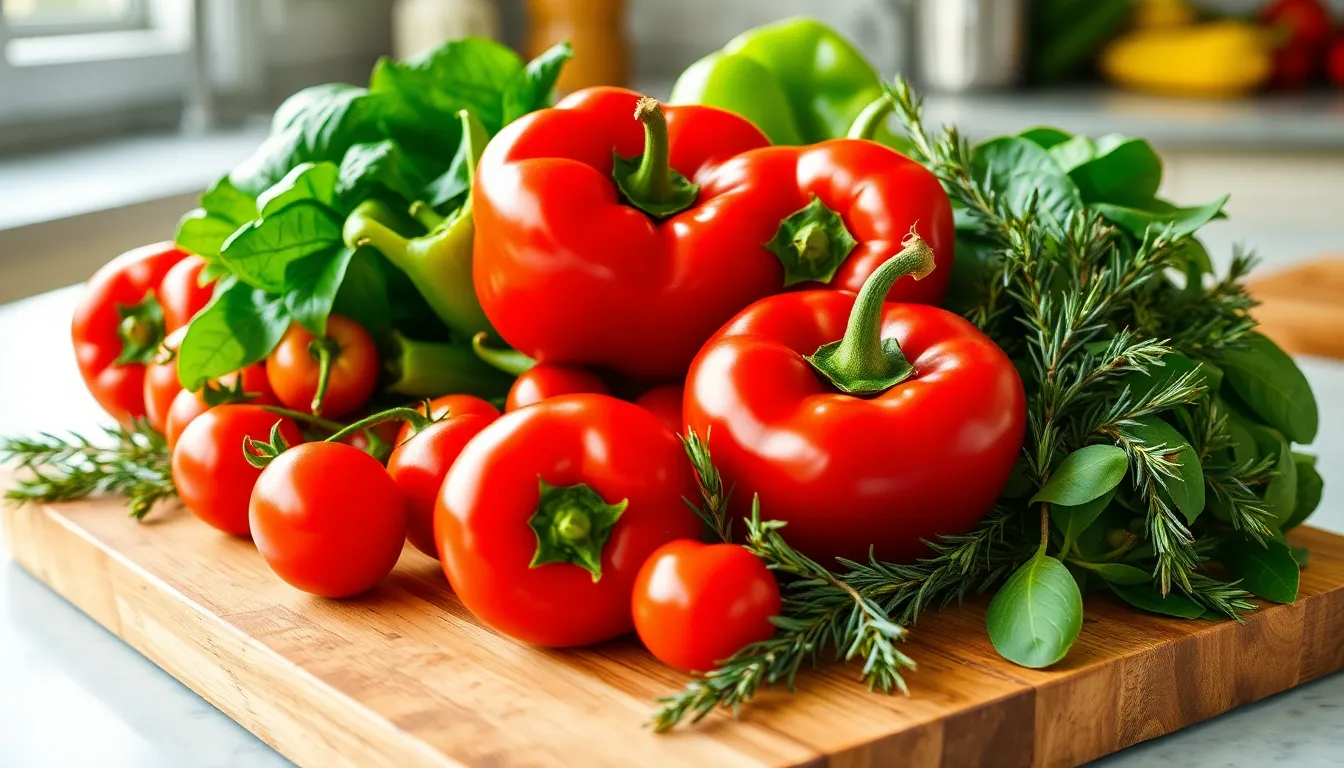In a world where salt often steals the show, it’s time to give sodium the boot and embrace a healthier, flavorful life. Low sodium recipes don’t just keep your heart happy; they also prove that delicious meals can be packed with zest without relying on the white crystals. Who knew that cutting back on salt could lead to culinary adventures that make taste buds dance?
Imagine whipping up dishes that are not only good for you but also make your friends wonder if you’ve secretly become a gourmet chef. From zesty lemon herb chicken to savory quinoa bowls, low sodium cooking is a game-changer. So grab your apron and get ready to explore mouthwatering recipes that’ll have you saying goodbye to bland and hello to vibrant flavors—all while keeping your health in check.
Table of Contents
ToggleBenefits Of Low Sodium Recipes
Low sodium recipes offer numerous advantages for both health and culinary enjoyment. By focusing on these meals, individuals can achieve a flavorful dining experience while promoting well-being.
Health Benefits
Reducing sodium intake significantly lowers the risk of high blood pressure. Studies show that a decrease of just 1,000 mg of sodium daily can reduce blood pressure by about 4-5 mm Hg. Heart-related diseases become less likely with a controlled sodium intake. Eating low sodium meals supports kidney function, particularly for those with existing conditions. Additionally, some research suggests that lower sodium consumption may reduce the likelihood of stroke and heart attack.
Culinary Benefits
Low sodium recipes enhance creativity in cooking. Dishes without excessive salt allow the natural flavors of ingredients to shine. Seasoning with herbs, spices, citrus, and vinegar adds depth, proving that tasty meals don’t require high sodium levels. Experimenting with new flavors keeps the meal planning exciting. Preparing low sodium foods also promotes healthier eating habits, encouraging more whole foods like fruits and vegetables. Discovering diverse cooking styles becomes easier with low sodium options, making each meal a delightful experience.
Key Ingredients For Low Sodium Cooking

Low sodium cooking relies on various flavorful ingredients to enhance meals without excessive salt. Key elements include herbs, spices, and fresh produce.
Herbs And Spices
Flavorful herbs and spices serve as essential components in low sodium recipes. Basil enhances tomato dishes, while rosemary complements roasted meats. Garlic provides a robust taste, and ginger adds warmth to stir-fries. Instead of salt, dill can brighten fish dishes and elevate salads. Cumin introduces an earthy note, making it valuable in beans and grains. Each herb and spice contributes unique profiles, allowing cooks to create vibrant meals with depth.
Fresh Produce
Fresh produce offers a wide range of flavors and essential nutrients. Juicy tomatoes, crisp bell peppers, and fragrant onions enhance various dishes. Leafy greens like spinach and kale provide a nutrient-dense base for salads. Seasonal fruits such as berries and citrus can add flavor complexity and natural sweetness. Artichokes and asparagus introduce distinct tastes, perfectly complementing proteins or served alone as side dishes. Utilizing fresh produce not only enriches dishes but also promotes a healthier lifestyle by emphasizing whole foods.
Easy Low Sodium Recipes To Try
Explore these flavorful low sodium recipes designed to satisfy taste buds while minimizing sodium intake.
Breakfast Options
Start the day with a veggie-packed omelette. Use fresh spinach, tomatoes, and bell peppers to create a vibrant dish that’s rich in nutrients. Another great choice involves oatmeal topped with sliced bananas and a sprinkle of cinnamon. This wholesome option provides fiber and natural sweetness without the added salt. Additionally, consider smoothie bowls made with unsweetened almond milk, berries, and a handful of kale, delivering vitamins without excess sodium.
Lunch Ideas
For lunch, try a quinoa salad featuring black beans, corn, and diced avocado. This combination offers protein and healthy fats while remaining low in sodium. A wrap with turkey, lettuce, and sliced cucumbers makes for a refreshing meal that’s easy to prepare. Pair it with a homemade vinaigrette made from olive oil and lemon juice for added flavor. Another option is a creamy vegetable soup, prepared with carrots, celery, and herbs for taste, minus the salt.
Dinner Selections
Dinner can be delightful with baked salmon seasoned with herbs and lemon. This dish pairs perfectly with steamed broccoli and quinoa for a complete meal. Stir-fried vegetables with tofu in a light teriyaki sauce provide plant-based protein and vibrant colors on the plate. Others might enjoy a lentil stew made with carrots and onions, simmered in vegetable broth for a comforting dinner. Mixing spices like cumin or paprika elevates flavors without relying on sodium.
Tips For Reducing Sodium In Your Cooking
Reducing sodium can enhance meals while promoting health. Here are effective strategies to lower sodium in cooking.
Smart Substitutions
Using alternatives for salt adds flavor without the sodium. Fresh herbs and spices provide robust tastes; basil, parsley, and garlic brighten dishes. Nutrient-rich ingredients like lemon juice and vinegar offer zest and tanginess. Low-sodium broths serve as excellent bases for soups and sauces. Cheese varieties exist that contain less sodium, allowing for creamy textures without excessive salt. When baking, unsalted butter or oil can replace salted versions effectively. Opt for fresh produce rather than canned, which often contains added sodium.
Cooking Techniques
Employing certain cooking methods enhances flavors while reducing the need for salt. Roasting vegetables intensifies their natural sweetness, eliminating the need for additional sodium. Grilling meats adds a smoky taste that meshes well with spices. Sautéing with a splash of broth or citrus also increases flavor depth without added salt. Steaming maintains the integrity of vegetables, preserving taste and nutrients. Experimenting with marinating proteins in low-sodium mixtures can create delicious results. Using these techniques allows every bite to shine, ensuring meals remain exciting.
Embracing low sodium recipes opens the door to a world of flavorful possibilities. By focusing on fresh ingredients and vibrant herbs and spices, anyone can create delicious meals that support heart health and overall well-being.
This approach not only enhances culinary creativity but also encourages healthier eating habits centered around whole foods. With the right techniques and substitutions, it’s easy to enjoy meals that are both satisfying and nourishing.
Whether it’s a zesty chicken dish or a hearty quinoa salad, low sodium cooking proves that health and taste can go hand in hand. It’s time to explore these exciting recipes and transform the way meals are prepared and enjoyed.

